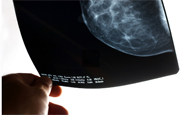
TUESDAY, Oct. 2 (HealthDay News) — Digital mammography was better than the older film mammography at detecting cancers that could be life-threatening, Dutch researchers report.
“This study again proves that digital mammography is superior to film screen mammography in early detection of breast cancer,” said Dr. Kristin Byrne, chief of breast imaging at Lenox Hill Hospital in New York City.
The study comparing the two methods was published online Oct. 2 in the journal Radiology
Researchers from the National Expert and Training Centre for Breast Cancer Screening and other institutions evaluated a total of about 1.2 million screening mammograms.
More than 87 percent were film and nearly 13 percent were digital.
Breast cancer was found in more than 6,400 women during the study period. Cancers were detected at higher rates with digital than with film.
Digital found more cancers known as high-grade ductal carcinoma in situ (DCIS), which can progress more rapidly to invasive cancer than low-grade DCIS. Low-grade DCIS typically takes more than three decades to progress, although all grades can progress and become invasive.
High-grade DCIS was detected 58.5 percent of the time with digital, but only 50.5 percent of the time with film.
Digital did not result in a disproportionate increase in the detection of low-grade lesions, which may never trouble a woman in her lifetime.
Both film and digital mammograms use X-rays to take an image of the breast. In film mammograms, the image is recorded on film. Digital mammograms store the image on a computer. Doctors can then enhance them on a computer screen and adjust the size, brightness or contrast to focus on certain areas.
Previous research in the United States has found that digital is better than film for certain groups, including women under age 50 with dense breasts.
The new study ”in some ways confirms what we have seen in earlier studies,” said Dr. Debra Monticciolo, professor of radiology at Texas A&M College of Medicine and section chief of breast imaging. She also is president of the Society of Breast Imaging and a member of the American College of Radiology Commission on Breast Imaging.
“What they’ve shown with digital is that we are better at finding the cancers that have the most potential to harm the patients,” she said. That includes the invasive and higher-grade DCIS.
The Dutch researchers pointed out that their approach to screening is different than that in the United States. The Dutch focus is on a balance between detection, recall and false-positives. The U.S. focus, they say, is more on high detection rates, which means higher recall and false-positive rates.
Women who have access only to film mammography should know that it, too, is a proven lifesaver, although digital has been shown in much research to be the better detector, Monticciolo said.
More information
To learn more about mammograms, visit the American Cancer Society.

